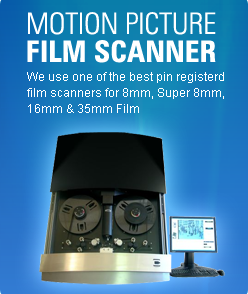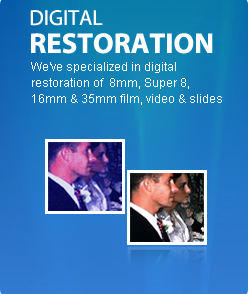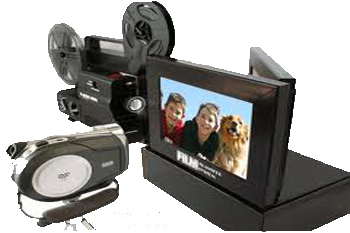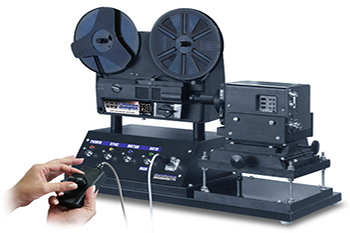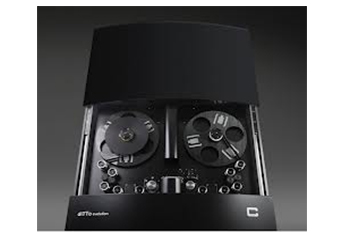
Film Conversion Equipment
Film Scanning and Film Transfer Equipment Types
The type of film scanning machine used for your 8mm, Super 8 or 16mm film conversion will have as much of an impact on the quality you receive as the resolution of the scan itself will. For example, if you wanted to digitize a photograph and tried doing it two different ways. You first put the photograph down on a table and took a picture of it using your smart phone or camera. Then you took the picture and scanned it using a flatbed scanner. If you compare the two side by side on your computer it will become really obvious that the flatbed scanner produced a digital image as good as the photograph. However, the picture you took with your phone or camera does not look close to the quality of the original photograph.
The same goes for scanning your 8mm, Super 8 or 16mm film. The real-time and frame by frame machines below are using a camcorder to take a picture of your film. The motion picture film scanner and Datacine machine are scanning the film. The results will be significantly different.
Film Conversion Equipment |
|
Real Time
|
|
Frame by Frame
|
|
Professional Film Scanners
|
|
Equally important as resolution is the type of film transfer. There are a few basic types of film transfer processes. More than 80% of the companies out there today use a real-time transfer. Any type of real-time film transfer will result in video that is 40-50% worse than the film’s current condition.
So, at this point you’ve learned that film transfers can capture at standard definition (480 lines), high definition (1080 lines) or 2K (1556 lines). You’ve also learned about the 3 different types of film transfers being used today. In order from least to best quality we have:
The film transfer processes above are the basics types and do not include any restoration by themselves. Restoration comes in many different capabilities from color and exposure correction, to grain elimination, to stabilization
Cheyenne Fun Facts: Cheyenne is the capital of Wyoming and is located in Laramie County. The city was established in 1867. The town took the name of the well known Cheyenne Indian nation. More than 50 locations in the city are part of the National Register of Historical Places.
Wyoming Fun Facts: Today, although it is the 10th largest state by area, Wyoming has the smallest population of all the states, with just over 550,000 residents.The state is home to most of Yellowstone National Park, one of the most popular national parks in the country. Millions of touristsvisit Wyomingevery year to seethe geyser Old Faithful and the Grand Prismatic Spring, the largest hot spring in the country, as well as a variety of wildlife including moose, elk, bighorn sheep, wolves, coyotes, eagles, black bears and grizzly bears. Wyoming became the 44th state to join the union in 1890. Wyoming was the first U.S.
